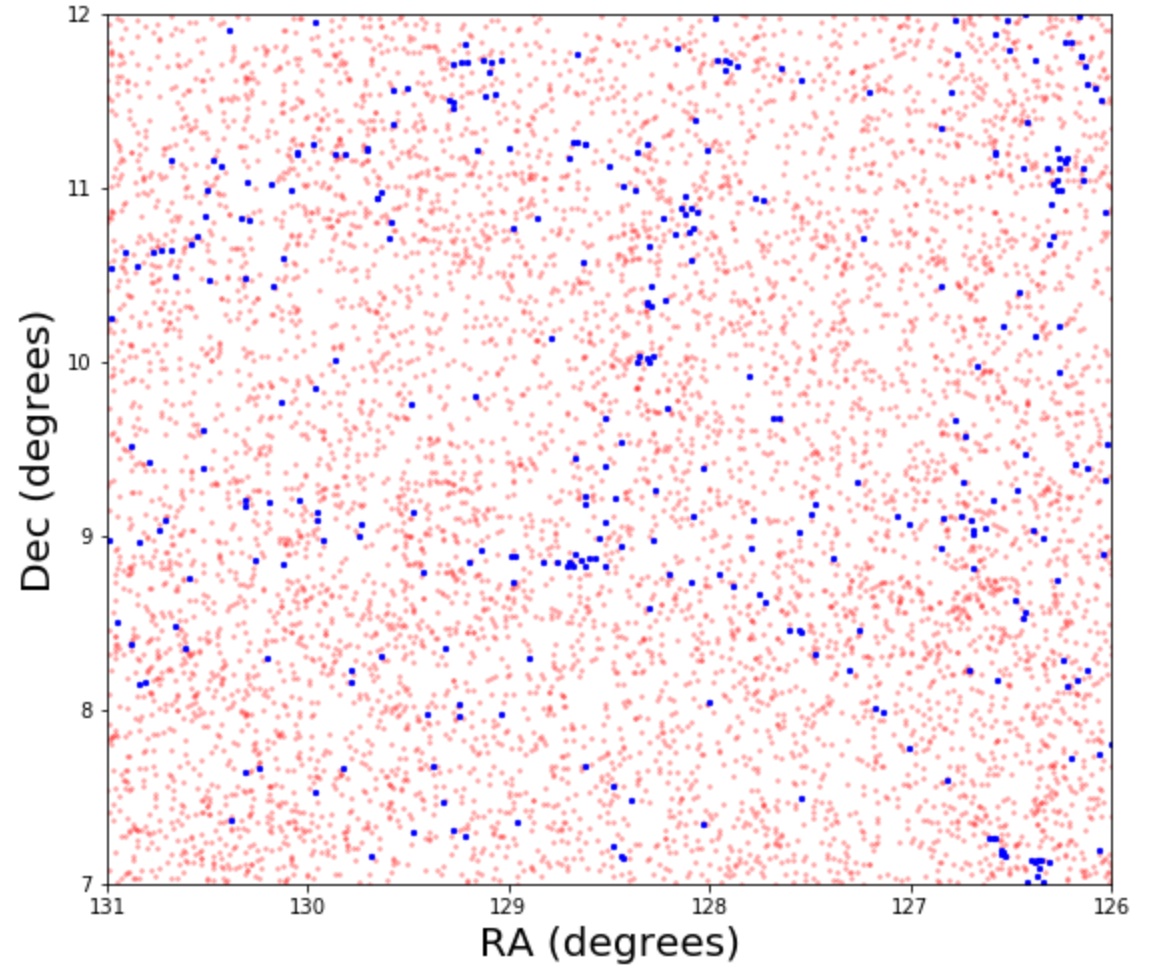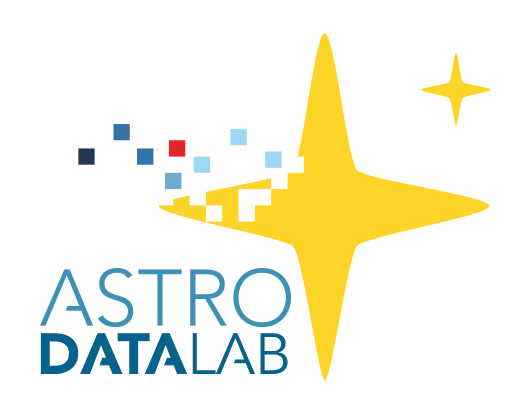Section author: Stephanie Juneau <stephanie.juneau@noirlab.edu>
1.2.2. Probe large-scale structure in DECaLS¶
1.2.2.1. Background¶
Galaxies are not randomly distributed in space. Instead, they are organized in groups, clusters and/or filaments. In this science case, we do visual inspection of large-scale structures using galaxies with spectroscopic redshifts from the SDSS/BOSS survey.
The Jypter notebook file and a rendered HTML version are available on GitHub:
You will also find them on your Data Lab notebook server, in the notebooks-latest/
folder. [It’s best to first fetch the newest notebooks].
1.2.2.2. Goal¶
The goal is to probe large scale structures of galaxies with spectroscopic redshifts from SDSS/BOSS. We also use this science case to demonstrate a joint query between a DECaLS photometric table pre-matched to SDSS and the SDSS specObj table.
1.2.2.3. Data¶
We will use both a Legacy Survey (DECaLS) table and a SDSS specObj table.
The columns from the DECaLS table used (Tractor, pre-matched to specObj DR13)
The columns from the SDSS/BOSS DR13 table are listed here.
1.2.2.4. Technique¶
This short notebook is a starting point for visual inspection of large-scale structures of galaxies. The main technique is to plot the positions of galaxies in narrow slides of redshift in order to find structures that may be physically associated such as filaments or clusters of galaxies.
Several extensions of this work would be possible, such as probing the large-scale structures as a function of galaxy type or other photometric property from the Legacy Survey (e.g., DECaLS).
1.2.2.5. Data Lab Workflow¶
The first steps are to import libraries that will be needed, and to authenticate.
Then, we query relevant columns from the ls_dr3.dr13_specobj table (L) of the LS DR3 database, which was pre-matched to SDSS DR13 by the DECaLS team jointly with the sdss_dr13.specobj table (S). The query is writte below, for a limited region of the sky of 5x5 square degrees.
L.ra,L.dec,L.type,
S.z,S.plug_ra,S.plug_dec,S.class,
S.vdisp,S.vdisp_err
FROM ls_dr3.dr3_specobj_dr13 as L JOIN sdss_dr13.specobj as S
ON L.specObjId = S.specobjid
WHERE L.ra BETWEEN %s and %s and L.dec BETWEEN %s and %s and (L.ra_ivar > 0)
limit 100000""") %(126,131,7.,12.) #small region
The RA, dec positions from the DECaLS table (L) will be compared to the plug_RA, plug_dec positions of the SDSS table (S). We can compare them as a sanity check that the matches correspond. The main quantity of interest here will be the spectroscopic redshift (z).
1.2.2.6. Output¶

Figure: RA and Dec position for galaxies in both DECaLS and SDSS (light red). Overplotted in blue are galaxies in a thin redshift slice.¶
In the figure above, the red points correspond to objects within the SDSS specObj table. They do not include, for example, DECaLS photometric sources that lack a entry in the SDSS specObj table. Filled blue symbols mark galaxies in a narrow redshift slice (here, 0.105<*z*<0.125). We can see by eye possible filaments along which galaxies are located. Further work would be needed to confirm the nature of these filaments.
